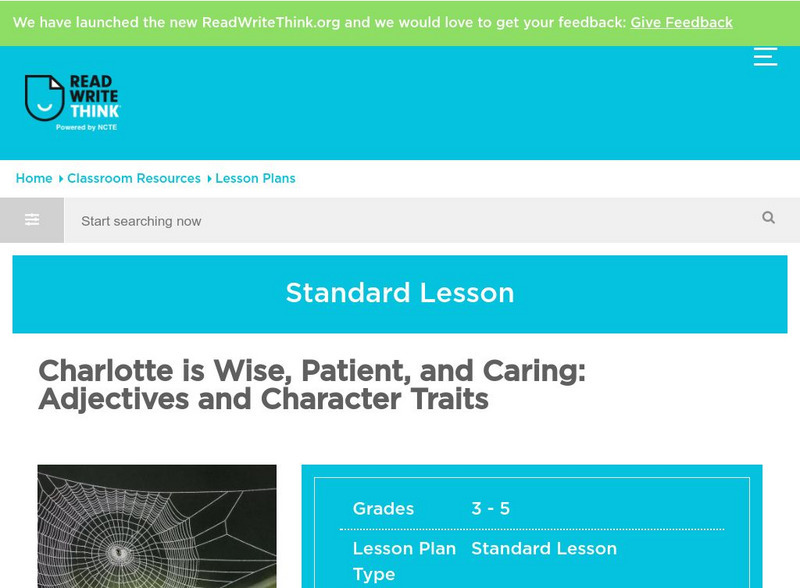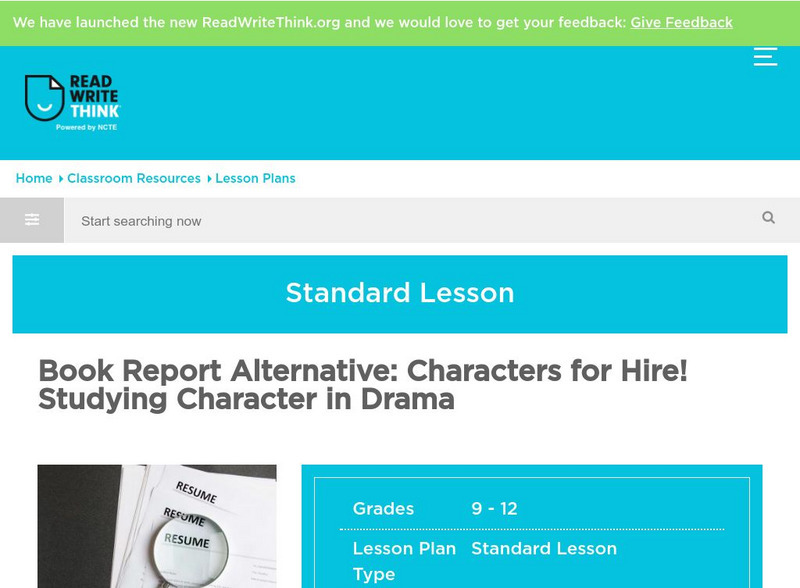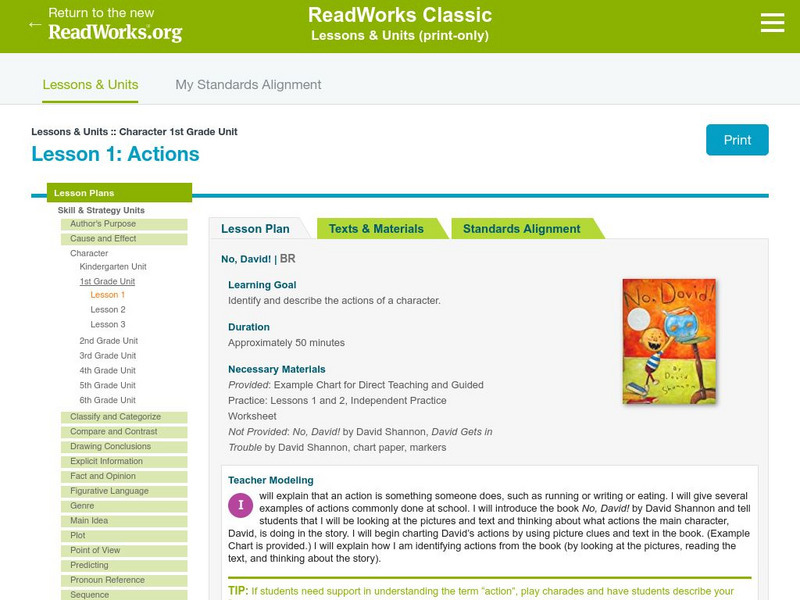Hi, what do you want to do?
Curated OER
Introduction to Scientific Illustration
Seventh graders draw scientific illustrations in the lab. In this life science lesson, 7th graders discuss the importance of drawing in science experiments. They differentiate scientific drawing from basic art.
Curated OER
Numerical Determination of Drag Coefficients
Students create a video of an object falling with a drag. In this physics lesson, students calculate drag coefficient using data from Logger Pro. They calculate velocity and acceleration of the object.
Curated OER
Physical Pendulum Lab
Students calculate the moment of inertia of a disc. For this physics lesson, students differentiate the two methods used in finding the inertia. They construct their own pendulum for the lab.
Curated OER
Word Bank; Theater
Students are given a word bank relating to theater. In this word bank lesson, students are introduced to a list of words and their definitions. Students then build their vocabulary regarding theatrical concepts.
Curated OER
Anger (Part 1): Identifying Our Style
Pupils identify the two common sources of anger. In this psychology lesson, students discuss productive ways to express anger. They complete a reflection worksheet at the end of the lesson.
Curated OER
Interactive Food Pyramid
Students participate in the game, "Talking Food Pyramid." In this nutrition lesson, students recognize the organization of foods in to five groups. Students conclude by physically classifying a selection of foods in two groups.
Curated OER
Whack A Snack Lesson Plan
Students play a computer game where they match the correct food into the correct food group. In this food groups lesson plan, students also rate foods as being their favorite foods or not favorite foods.
Curated OER
Mechanical Properties
Students explore the concept of hardness. In this physical science lesson plan, students will be using clay heated at different temperatures to study hardness based on the indention left. Students will also be identifying the variables...
Curated OER
Coral Reef Bleaching
Students explore the structural biology of corals. Working individually, students identify how corals become bleached and which conditions produce more and less coral bleaching. Students explore how this effects the environment and...
ReadWriteThink
Read Write Think: Developing Characterization in Carver?s ?A Small, Good Thing
Contains plans for three lessons that teach characterization using Raymond Carver's short story "A Small, Good Thing." In addition to objectives and standards, this instructional plan contains links to PDF handouts and sites used in the...
ReadWriteThink
Read Write Think: Using Picture Books to Teach Characterization
Contains plans for two or three lessons that ask students to examine characterization in picture books to use as models for their own writing. In addition to objectives and standards, this instructional plan contains links to sites used...
ReadWriteThink
Read Write Think: Adjectives and Character Traits
Interactive lesson plan which allows for elementary students to learn the "Part of speech," concepts of adjectives as well as effective characterization techniques. Uses the story of Charlotte's Web.
ReadWriteThink
Read Write Think: Studying Character in Drama
Online lesson that allows students to study and follow a Shakespearean character throughout a play, analyzing their actions, traits and dialogue as clues to characterization.
British Library
British Library: Teaching Resources: Milton: Crime & Punishment in Paradise Lost
Through exploring characterization and setting in Paradise Lost, learners will reflect on how transgressive actions and their consequences are presented, with particular reference to Books I, II, IX, and X. Included in this lesson are...
Utah Education Network
Uen: 2nd Grade Act. 12: Guess My Character
This lesson plan engages students in reading comprehension strategies related to Patricia Polacco's book, My Rotten, Red-Headed, Older Brother. Students will analyze the story's characters and create thought bubbles associated with each...
CPALMS
Cpalms: Five Little Monkeys: Comparing and Contrasting
[Free Registration/Login Required] Five little monkeys sitting on a bed or sitting in a tree? In this close reading instructional activity, learners will compare and contrast the actions of the characters in two of Eileen Christelow's...
Read Works
Read Works: Lesson 1: Actions
In this resource, students will practice identifying and describing the actions of a character. Teachers will model these skills through the use of text and pictures from the story No, David! by David Shannon. Students will then draw a...
Better Lesson
Better Lesson: Speaking and Listening: Collaborative Conversations
Students will partner read The Kite, by Alma Flor Ada. Then work together in small collaborative groups to describe the character of the mother, the children, or the kitten. Included in this lesson are video demonstrations, printable...
National Endowment for the Humanities
Neh: Edsit Ement:charlotte Perkins Gilman's "The Yellow Wall Paper" Writing Women
A close reading of "The Yellow Wall-paper" employing the analysis of such literary concepts as setting, narrative style, symbol, and characterization. Students will write an essay discussing what the story suggests about middle-class...
ReadWriteThink
Read Write Think: Critical and Analytical Thinking About Literary Characters
Contains plans for four lessons that use the short story "After Twenty Years" by O. Henry to teach about characterization using word maps. In addition to objectives and standards, this instructional plan contains links to sites used in...
Lumen Learning
Lumen: Reading and Interpreting Literary Texts: How to Analyze a Short Story
This lesson focuses on analyzing a short story including all of the elements of a short story such as setting, plot and structure, and characterization.
ReadWriteThink
Read Write Think: Become a Character
In this online lesson plan and activity, young scholars actually "become" a character from a novel in their analysis of characterization. The lesson plan uses the Scarlet Letter, but any novel can be used. RL.9-10.3 Analyzing Characters,...
Alabama Learning Exchange
Alex: Scrapbook Book Report
After reading independently a novel or biography, students in this creative writing activity demonstrate their understanding of characterization and point of view by creating the main character's personal scrapbook.
Alabama Learning Exchange
Alex: Analyzing Characters in 12 Angry Men
Re-telling a story from the points of view of its various characters is a powerful way to review the events of a story, show how authors use characterization to reveal characters' personalities, and encourage students to view stories...
Other popular searches
- Indirect Characterization
- Adjectives Characterization
- Teaching Characterization
- Characterization Worksheets
- Chaucer's Characterization
- Characterization Power Point
- Direct Characterization
- Analyze Characterization
- Characterization Literature
- Characterization Test
- Characterization in Fiction
- Characterization Methods


























